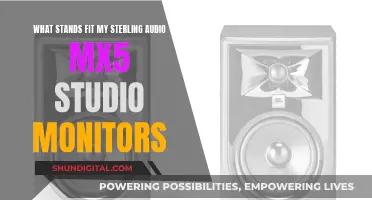
Monitoring employee performance is a crucial aspect of management. It involves observing, evaluating, and providing feedback on employees' work to ensure productivity, identify areas of improvement, and make informed decisions about promotions, raises, or layoffs. While managers are responsible for overseeing employee performance, it's impractical to manually monitor every employee's work at all times. This challenge has been further exacerbated by the rise of hybrid work models. Therefore, establishing systems and processes to track employee performance is essential. This can include setting clear expectations, goals, and key performance indicators, as well as utilising technology and software solutions. Effective monitoring boosts productivity, enhances security, ensures compliance, fosters transparency, and enables data-driven decision-making.
What You'll Learn

Regular check-ins and one-on-one meetings
Benefits of Regular Check-Ins and One-on-One Meetings:
- Improved employee engagement and productivity: Regular check-ins have been shown to increase employee engagement and productivity. For example, Adobe experienced a 30% reduction in voluntary turnover when they implemented regular check-ins. Similarly, GE saw a five-fold increase in productivity by shifting from annual performance reviews to regular, informal check-ins.
- Enhanced employee experience: Regular check-ins create a positive employee experience by establishing a clear channel of communication and fostering an interpersonal bond between managers and employees.
- Performance improvement: Check-ins allow managers to monitor employee performance, provide feedback, and reinforce team objectives. This helps employees stay focused and motivated, enabling them to improve their performance and work towards their goals.
- Early problem-solving: By meeting regularly, managers can identify potential issues early on and address them before they escalate. This proactive approach ensures that employees have the necessary support and resources to succeed.
- Trust and connection: Regular check-ins build trust and connection between managers and employees. When employees feel that their managers are involved in their work and care about their progress, they are more likely to be engaged and committed to their work.
- Adaptability: Check-ins help organizations adapt to changing circumstances and stay competitive. Managers can quickly identify areas that need improvement and make necessary adjustments to stay aligned with team and company goals.
Best Practices for Effective Check-Ins and One-on-One Meetings:
- Frequency and structure: Check-ins should be held regularly, with the frequency depending on the employee's experience level and the company's culture. For inexperienced employees, weekly or even daily check-ins may be necessary, while more skilled employees may only require check-ins once every two weeks or monthly. It is essential to strike a balance between providing support and avoiding micromanagement.
- Preparation and planning: Managers should come prepared to check-ins with a clear agenda and relevant questions. Providing a structure to the meeting ensures that the discussion stays focused and productive. It is also important to create a safe and respectful environment where employees feel comfortable sharing their thoughts and concerns.
- Action items and follow-up: Effective check-ins should conclude with concrete takeaways and action items. By assigning tasks and setting expectations, managers can hold employees accountable and ensure that key tasks are completed. Additionally, managers should follow up on any commitments made during the check-in to promote a culture of accountability.
- Combination of team and individual check-ins: Depending on the team's needs, a combination of team check-ins and one-on-one meetings can be beneficial. Team check-ins improve alignment by helping employees understand what their colleagues are working on, while individual check-ins provide a space for personalized feedback and private discussions.
- Incorporating feedback: Check-ins are an opportunity to provide and receive feedback. Managers can offer guidance and suggestions for improvement, and employees can share their concerns and ideas. This two-way communication helps to build trust and improve performance.
In summary, regular check-ins and one-on-one meetings are crucial for monitoring job performance and fostering positive employee-manager relationships. By implementing these meetings effectively, organizations can improve employee engagement, enhance performance, and create a supportive and productive work environment.
Best Places to Buy HP Monitors
You may want to see also

Performance management software
- Conduct employee performance reviews
- Maintain a record of discussion topics
- Establish employee goals
- Facilitate 360-degree feedback
- Offer organisational planning capabilities to ensure certain skill sets are present within the organisation
- Plan for succession contingencies in case of employee departure
- Make compensation decisions
- Provide real-time feedback
- Align personal goals with organisational goals
- Aid in succession planning and career development
- Improve employee engagement
Some examples of performance management software include:
- 15Five
- PerformYard
- Leapsome
- Lattice
- Workhuman Social Recognition
- BambooHR
- Culture Amp
- Paylocity
- StaffCircle
- Keka HR
- ADP Workforce Now
Eliminating Shadows: Enhance Your Monitor Viewing Experience
You may want to see also

Employee monitoring software
The software typically involves tracking employees' computer activities, including application and website usage, keystrokes, emails, and even video recordings of their screens. This data can then be used to generate insights and reports on employee productivity and performance, which can help improve efficiency, identify areas of improvement, and make more informed decisions about employee raises, promotions, and compensation plans.
Some examples of employee monitoring software include:
- Teramind
- Veriato Cerebral
- ActivTrak
- Controlio
- Hubstaff
- InterGuard
- StaffCop Enterprise
- VeriClock
- DeskTime Pro
- Workpuls
While employee monitoring software can provide valuable insights, it is important to consider the potential drawbacks, such as privacy concerns and resistance from employees who may feel that constant monitoring is invasive or micromanaging. Therefore, it is crucial to introduce and implement such software carefully, with a focus on transparency and trust.
Types of Employee Monitoring Software
There are different types of employee monitoring software, and the right choice depends on the specific needs of the business. Some software may be designed specifically for remote teams, while others may be better suited for in-office settings.
Additionally, some software may offer more advanced features, such as video recording and optical character recognition (OCR), while others may provide more basic functionality like time tracking and task management.
Benefits of Employee Monitoring Software
- Increased productivity: By understanding how employees spend their time, managers can identify bottlenecks and improve workflows.
- Higher employee engagement and retention: Monitoring tools can help identify signs of employee burnout, allowing managers to take preventative measures to improve employee well-being.
- Enhanced security and compliance: Monitoring software can help identify potential security risks and ensure employees follow best practices for data security.
- Lower operational costs: By tracking app usage and location insights, businesses can identify and eliminate unnecessary subscriptions and unused office space.
- Improved visibility into remote and hybrid employees: With many companies adopting remote and hybrid work models, employee monitoring software provides insights into how working off-site impacts performance.
Considerations for Using Employee Monitoring Software
When considering employee monitoring software, it is important to keep the following in mind:
- Privacy: Team members need to trust that the organization is not violating their privacy with invasive monitoring tactics.
- Resistance: Companies that don't communicate the use of monitoring software upfront are likely to face resistance from employees who feel micromanaged.
- Stress and anxiety: Invasive monitoring tactics, such as keylogging and video surveillance, can induce stress and harm productivity.
- Legal compliance: The legality of employee monitoring software varies depending on the jurisdiction. It is important to inform employees of the monitoring and obtain their consent, as well as ensure that the monitoring activities do not violate any privacy laws or regulations.
Best Practices for Introducing Employee Monitoring Software
To ensure a smooth implementation of employee monitoring software, consider the following best practices:
- Build trust and transparency: Be open and honest about the use of monitoring software, and involve employees in the process. Allow employees to access their own data and make adjustments to improve their performance.
- Explain the benefits: Help employees understand how the software will benefit them, such as by offering more flexible work arrangements or recognizing their achievements.
- Create a formal policy: Clearly communicate what will be monitored and what will remain private. Share this policy with current employees and make it part of the onboarding process for new hires.
Performance Monitor Mastery: Reading Basics to Advanced Tips
You may want to see also

Self-monitoring tools
- Clockify: Clockify is a time-tracking software that allows you to monitor the time spent on different tasks in real time. It offers a timer feature and a manual time entry option via timesheets. With Clockify, you can track who worked on what task, for how long, and the efficiency of the process.
- TimeDoctor: TimeDoctor is a suite of time-tracking tools that includes online timesheets and payroll integration. It has a user activity monitoring feature, alerting you when you spend too much time on non-work-related websites. It also provides a dashboard for analysing your productivity patterns and behaviour.
- Hubstaff: Hubstaff is a versatile time-tracking tool that improves productivity by tracking activity rates based on mouse and keyboard usage. It does not log keystrokes, thus maintaining a balance between privacy and performance monitoring.
- ActivTrak: ActivTrak offers a free plan for up to three users, which includes activity alarms, email notifications, and access to online onboarding resources. It tracks productivity by monitoring mouse movements, keyboard activity, and website usage.
- Intelogos: Intelogos is an AI-driven performance management tool that provides insights into your activities and productivity. It includes features like app and website usage monitoring, activity tracking, deep analytics, and real-time monitoring.
- Insightful: Insightful is a workforce analytics software that combines time tracking and employee monitoring. It offers stealth mode, allowing you to monitor employee workstations undetected. It also has a productivity labelling feature that tags unproductive websites and applications.
- Connecteam: Connecteam is an employee management and team productivity software with features like real-time time tracking and absence management. It includes online forms and checklists for remote employees and a GPS-based time clock feature.
- CleverControl: CleverControl is a cloud-based employee monitoring software suitable for small and medium-sized businesses. It offers continuous screen recording, webcam recording, call recording, and social networking activity monitoring.
- ControlUp: ControlUp is a digital employee experience management system that helps monitor and optimise employee experience. It collects and stores historical data of device performance, allowing IT teams to spot trends and improve employee productivity.
Eliminating Black Bars: Maximizing Your Monitor's Potential
You may want to see also

360-degree feedback
Anonymity and Confidentiality:
Confidentiality and anonymity are crucial to the success of 360-degree feedback. Feedback providers should feel comfortable sharing their honest opinions without fear of repercussions. This also encourages more constructive and balanced input, as people may be more willing to point out areas for improvement.
Well-Defined Purpose and Communication:
Clearly communicate the purpose of the 360-degree feedback process to all involved parties. It is important to set the right expectations and ensure that feedback is used for development and improvement, rather than solely for performance evaluation.
- Selection of Reviewers:
- Focus on Strengths and Development:
While identifying areas for improvement is important, a strengths-based approach that focuses on natural talents and strengths can yield exponential growth. This approach also helps employees recognise their value and build confidence.
Training for Raters:
Providing training for raters is essential to ensure consistency and effectiveness in the feedback process. Raters should be trained to give feedback that will positively impact personal growth and encourage better relationships within the team.
- Actionable Feedback and Follow-up:
- Regular and Timely Feedback:
Consistency and frequency are important. Feedback should be given regularly, and a clear deadline for submission should be communicated to prevent delays. This also helps to create a culture of continuous development and improvement.
Customised Competencies and Questions:
Tailor the 360-degree feedback process to the specific needs and values of your organisation. Focus on competencies and behaviours that align with the organisation's goals and strategy. This ensures that the feedback is relevant and actionable for the individual's role and responsibilities.
Integration with Performance Evaluations:
While 360-degree feedback should primarily be a development tool, it can also provide valuable insights for performance evaluations. However, it should not be the sole basis for performance appraisals, as it focuses more on behaviours and competencies than basic skills or job requirements.
Senior Leadership Buy-in:
Engaging senior leaders and decision-makers is crucial for a successful 360-degree feedback program. Their support and participation will help to ensure organisational buy-in and encourage a culture of continuous development.
In conclusion, 360-degree feedback is a valuable tool for monitoring job performance and developing employees. By gathering input from multiple sources, individuals can gain a comprehensive understanding of their strengths and areas for improvement, leading to enhanced self-awareness and more effective leadership skills.
Starting a Business: Security Monitoring a Priority, Not an Afterthought
You may want to see also
Frequently asked questions
Monitoring job performance is the responsibility of the manager or supervisor. However, it's important to note that employees should also be involved in the process, and self-monitoring tools can be implemented to help employees track their own performance.
Monitoring job performance helps to identify areas where employees and processes can improve, and it plays a crucial role in driving business success. It also helps to uncover issues such as signs of burnout or disengagement, allowing employers to provide support and create a healthy workload balance. Additionally, it provides valuable feedback for employees, which can improve their performance and motivation.
There are several effective ways to monitor job performance, including regular check-ins and one-on-one meetings, using performance management software, implementing employee monitoring software, peer reviews and 360-degree feedback, self-reported surveys, and listening to what employees are saying and doing. It's important to maintain a positive working relationship and focus on improvement rather than trying to "trip up" employees.







